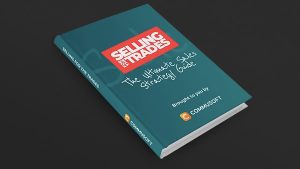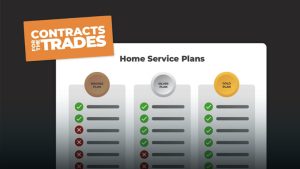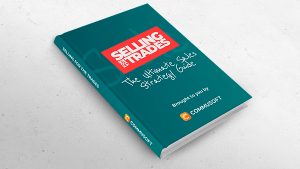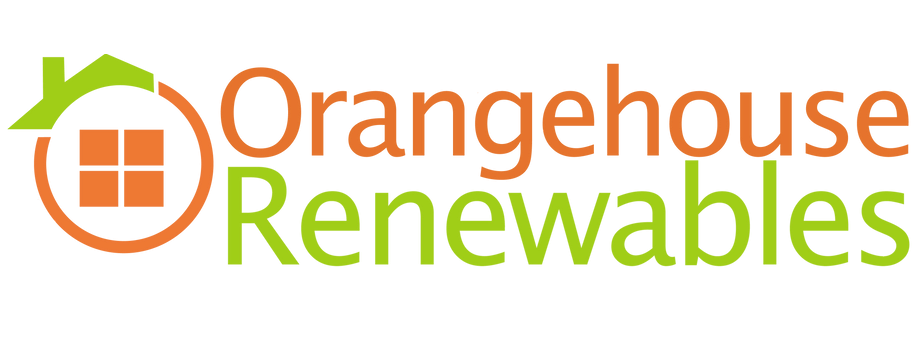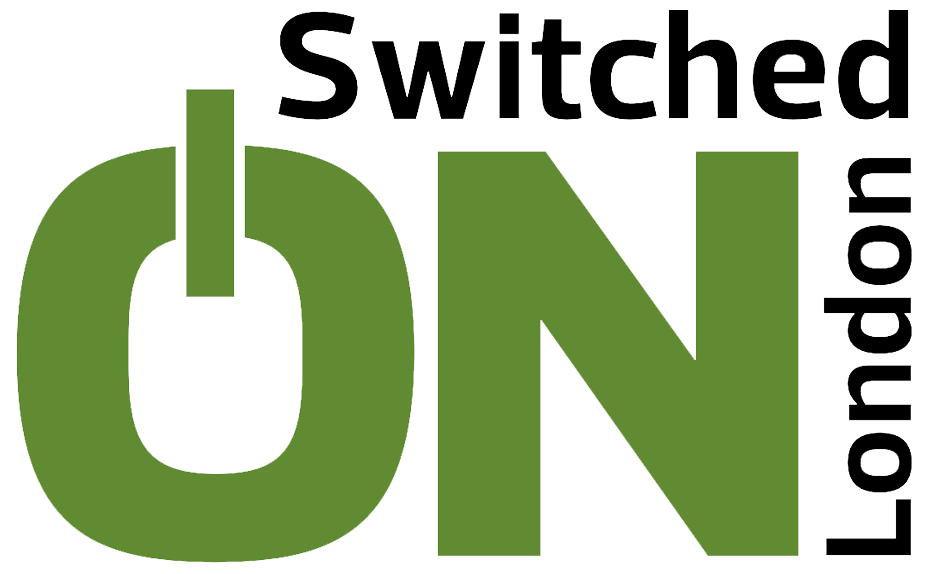Converting enquiries into paying jobs can be a real challenge, especially in today’s competitive market.
So let’s ask: do you know how your sales performance is really doing?
Developing a sales strategy will help you to answer that question.

Why not have a listen?
What does a sales strategy look like?
We’d love to say there’s one answer, but there’s rarely ever a one-and-done solution when it comes to trying to improve your sales performance.
After all, whether it’s the customers your business interacts with, the services or products you offer, or even your engineers and staff, everyone is different.
This is where a framework of strategies and best practices to choose from can help prepare your team so they can handle all sorts of scenarios.
Much like how you’d train your engineers to use new tools so they can work more efficiently, learning different sales strategies will have a similar affect and positively impact your business.
With that said, let’s explore 11 strategies to improve sales performance for your service, maintenance, or installation business!

What is Sales Performance, exactly?
Sales performance is all about understanding your success at converting leads into customers.
To measure and improve your sales performance, you need a strategy. From there, it will be easier to monitor performance and assess success over a set period of time.
Businesses will typically review their sales strategy at monthly, quarterly, and yearly intervals.
Part of your sales strategy will require you to establish key performance indicators (KPIs). Sales KPIs will make it easier to assess and understand how well you’re doing.
KPIs used to monitor performance could include the:
- Number of deals closed i.e. the number of paid jobs your team has completed
- Your win rate i.e. the percentage of prospects who become customers versus those who don’t
- Length of the sales process i.e. how long it takes to convert a lead into a customer
- Quality of your prospects i.e. if you’re targeting the right customers to meet your targets (more on that shortly).
These are just a few examples of sales KPIs but it’s important to note many things can influence them.
What factors can affect Sales Performance?
Both internal and external factors can affect sales performance:
- The economy: whether it’s booming or facing a downturn, it makes a difference
- The competition you’re up against: it’s always a battle to stand out and stay on top
- Staff motivation: getting staff onside can transform a business’ success
- Data and goals: bad data or unrealistic targets can be damaging
- Communication and transparency: communication is the foundation for your success
While some of these—like the economy—lie out of your ability to control, there are actions you can take to manage their impact.
Below, we’ll explore 11 strategies to improve sales performance. Use them to support your business as you strive to find success with sales!
11 Strategies to Improve Sales Performance:
1. Know what makes your business stand out
This is all about winning the hearts and minds of your customers and it requires a bit of self-reflection.
Ask yourselves, and your team what it is that sets you apart from your competition.
- Is it the quality of your customer service?
- Is it the personal touches and relationships you build with customers?
- Do your engineers go above and beyond just getting the job done?
- How about value for money? Do customers get the best, every time?
There’s no one right answer here and only you will know what it is that stands out most about your business.
However, so long as your own team believes in what makes your business special, and that they make this clear to customers, it can make all the difference in winning them over.
After all, if your team comes across as confident in what they’re selling and why customers should choose your services, it will give customers confidence to choose you, too.
2. Establish clear targets and goals: know what you’re aiming to achieve
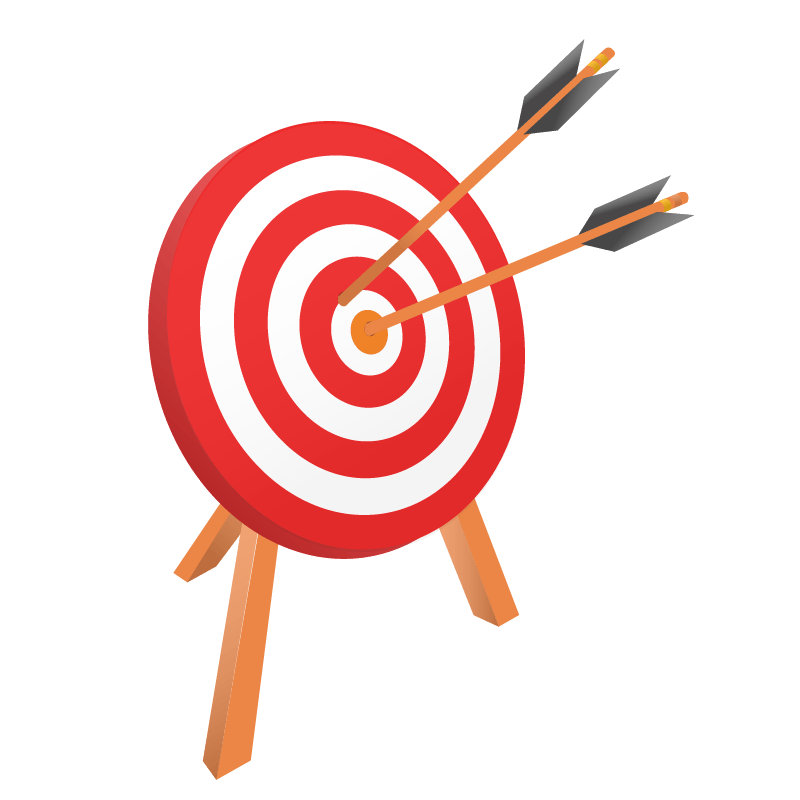
Belief is one thing, but how about something more concrete?
That’s where having established targets and goals comes in.
Clearly defined goals will give your team something to reach for.
As mentioned, KPIs are typically an excellent way to highlight what’s important for your business. If your team knows what they’re striving for, it’s a driving force of motivation.
For instance, is the goal to book more jobs, or is it trying to increase profit per job? With dedicated numbers, it sets a clear target and you can strategize about the best ways to reach them.
Whatever the goal, ensure that KPIs are reasonable and attainable. They can be high but it’s also about being realistic! After all, impossible KPIs can have a detrimental effect on motivation and productivity.
However, by striking a balance, you’ll help your staff to feel motivated to reach these targets.
3. Encourage and support your staff
KPIs are a fantastic tool, but be wary: a negative trait often attributed to sales is the pressure to perform and that doesn’t create a great environment to work in.
It’s all about balance.
While performance and reaching targets is important, pressuring staff is not the way to go. That’s why it’s important to create an environment that encourages them to reach targets, but which doesn’t pile on the pressure.
After all, this can lead to stress and that’s a slippery slope to a variety of negative knock-on effects.

Bad experiences will lead to problems that affect staff and customers alike. This could be an increase in staff turnover, loss of motivation, friction, customer dissatisfaction, and distrust.
When it comes to selling, it’s important that staff recognise that while success is great, failure isn’t the end of the world. For instance, if they aren’t successful in closing a deal, it’s often more important to understand why so that they can learn from it and find success later.
Objection handling techniques can help and you can learn more about them here.
Strategies like these give your staff the best chance of managing stressful situations, which will contribute to their improved performance.
4. Understand who you’re selling to by building your buyer’s persona
- Who do you want to sell to?
- Who’s your target audience?
- Why are you selling to them?
Having a clear understanding of who your target market is can help in all sorts of ways.
From being able to provide more bespoke types of service, figuring out how to market your services, or even if there’s a need to adjust your prices. When you have a clear idea of who you’re targeting, you can be a lot more focused in your approach to selling.
Keep in mind that the best buyer personas come from real information you’ve been able to collect about your customers. To build a good persona, be sure to speak to your staff. They can help you build an accurate picture of the wants, needs, desires, and even personality types of your customers, and this information will help you sell in a more targeted way.
Working out your ideal buyer persona will require you to think about some of the following:
- Are they commercial or residential?
- Where are they based?
- What sort of prices can they afford?
- What needs do they have that you can solve?
Keep in mind you can build more than one persona. After all, if you’re a large business, you may do a mix of commercial and residential work, so it’s helpful to tailor profiles (and in turn, your services) to meet the needs of these very different customers.
To help you create buyer personas, we’d suggest exploring this article from Hubspot. It contains more detail to help you create comprehensive profiles of your own.
5. Adopt a consultative to selling approach
Fundamentally speaking, consultative selling is about offering great customer service. It relies on your team being able to use their professional knowledge to ask the right questions so that they can better help your customers.
By building buyer personas, as above, your team will get a much clearer idea of who they’re selling to. This will put them in a stronger position when it comes to interacting with prospects.
That’s because staff aren’t going in blind: they’re armed with valuable context that can help them to ask better questions and, in turn, have more productive conversations.
After all, your goal is to ensure that your prospects can get the solution they need from your services. And it’s consultative interactions that help you to figure this out and build stronger customer relationships.
This approach will play a big role in how you improve your sales performance. After all:
“71% of buyers believed that their relationship with the seller heavily influenced their decision to buy.”
Marketing Charts
It’s in your best interest to use consultative methods to build positive relationships that will improve your sales performance and chances of reaching success.
6. Use reviews to demonstrate value
Did you know:
“Over half (57%) of the selling process is completed for consumers before a company even has a chance to interact with them?”
Spotio.com
While it’s great to get involved and ask questions directly, there are effective, passive techniques you can use to improve sales performance, too. In this way, you can help customers to sell themselves on your services without lifting a finger.
Visual cues are the best way to get their attention, and few visual cues are more effective than a positive review.
Prospects often carry out a lot of research before sending an enquiry. If they can see that you’ve got a lot of positive 4 & 5 star reviews online, they’re much more likely to reach out.
“63% of consumers said they are more likely to purchase from a site that has product ratings and reviews.”
The Drum
After all, positive reviews indicate you’ve made a lot of other customers very happy. They demonstrate there’s confidence in your service, which can inspire confidence from other prospects, too.
You can learn more about the impact of positive reviews—and even where’s best to host reviews of your own—in our blog, here.
7. Reply promptly to every enquiry
Timing is everything when it comes to securing a sale. If you’re looking to improve your sales performance, make sure you’re sending timely replies.
Little else is more reassuring for a customer than getting a quick reply to their enquiry.
If you leave queries to stagnate, prospective customers will go over to your competition!
“[Research shows] 50% of buyers choose the vendor that responds first.”
Spotio
If you can respond to customers quickly, even with an automated reply to confirm their request was received, you increase the odds of getting them to the next stage of the buyer’s journey…
8. Craft a seamless buyer’s journey
Replying to an enquiry is just one of the customer journeys they’ll take in the buying process.
If you want to improve sales performance, then every single interaction with a customer needs to help them make a decision.
Ultimately, it’s all about great communication and the last thing you want is for a customer to get cold feet. Opportunity management software can help your entire sales team stay on top of all deals and move prospects through personalized buyer’s journeys.
That means every step should be as seamless as possible, with transparent conversations making it clear what will happen next.
For instance, the ideal buyer’s journey could look like this:
- Receiving an enquiry is met with a quick reply that acknowledges the query.
- From there, a follow-up conversation occurs to gather more specific information.
- This conversation provides context so that a proposal can be sent to the customer.
- The customer can choose a solution and the job is confirmed.
- After that, a job is booked and the customer can pay.
Of course, not every job will go as smoothly as this; factors, like those above, may slow things down.
However, if you establish an optimised journey, it makes it more likely that the process will be followed and that buyer’s will enjoy a seamless experience.
9. Treat every customer as an individual
However, be careful. When tasks become regimented, it can be easy to lose that personal touch where you end up treating every customer the same. That might not sound so bad, but if it comes at the cost of having a personalised experience, it can put customers off of working with you.
As far as possible, it’s important to keep that personal touch when interacting with customers; it’s one way to make them feel like they’re getting a great service. They want to be treated as an individual, not just like another job in your diary.
When customer service interactions feel more personal—something consultative selling helps with—it’s another step toward improving those relationships.
In turn, it can even encourage customer loyalty and improve your sales performance, too.
10. Don’t forget about old prospects or returning customers
If you’re eager to improve your sales performance, it’s important that you don’t neglect old prospects or customers you’ve worked with before.
Reaching out to see if you can reignite a past query can be a great way to actively win more work. The same goes for contacting previous customers: if you did a great job for them before, perhaps there’s more you can do for them at a later date.
Sending out an email enquiry of your own, or having a phone call or even a letter can help to give them a nudge. It’s a form of prospecting for jobs (where you go hunting for customers, rather than just wait for them to come to you), and can have excellent results.
11. Assess data and don’t be afraid to make adjustments to your sales strategy
With feedback from your customers, consultative questions providing valuable context, and KPIs all giving you a wealth of information, there’s a lot to be learned when you use these sales strategies in an effort to improve your sales.
The best action you can take with all this information, of course, learn from it and apply it. What you’ve discovered here can boost sales and help to improve the customer service that you provide, too.
Why it’s important to build a sales strategy:
And there you have it, 11 strategies to improve sales performance!
Take all these tips further by exploring our guide: Stop Quoting, Start Selling.
It’s a free resource you can access and covers everything from how to adopt a sales mindset, right through to building effective sales proposals.
Take a look and get started developing an effective sales strategy of your own, today:




